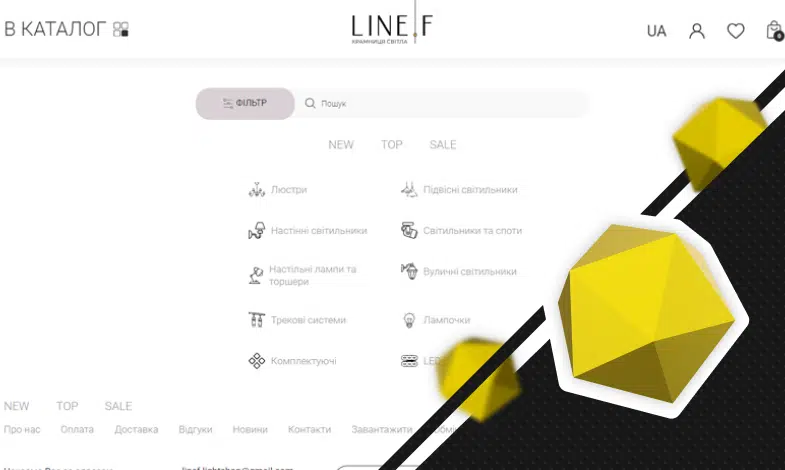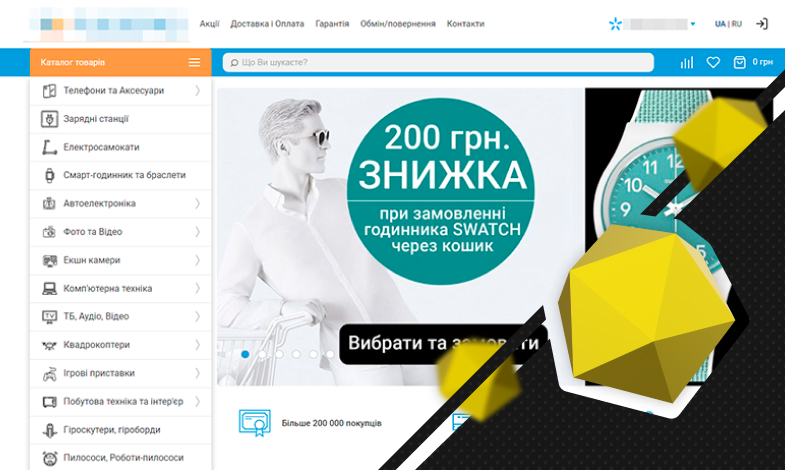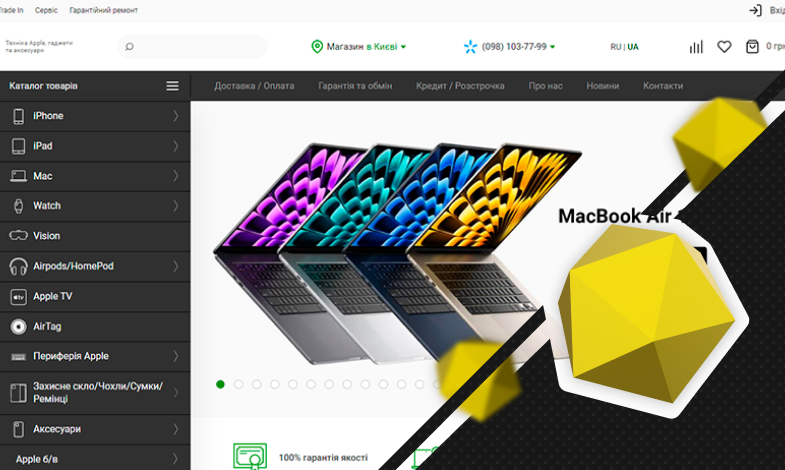



New website promotion and 529% increase in ROAS for Line F, a family-owned lighting store.

+1047 sales for an online store with a wide range of electronics, gadgets, and accessories.

Increased the average check to 65770 UAH for an online store specializing in Apple products.
Contextual advertising is a type of online advertising that involves displaying advertisements based on keywords related to a user’s search queries or web page content. These ads are shown to users when they search for relevant topics or browse web pages related to the advertised products or services, thereby increasing the relevance and effectiveness of the advertisement.
- Search advertising is a type of advertising that is displayed in response to user queries in search engines.
- Display advertising is banners and videos that are placed on websites and mobile applications.
- Remarketing is a strategy of reaching out to users who have already interacted with a website or used an application.
- Contextual Display Networks (CMN) are combinations of search and display advertising elements to display ads based on user interests and online behavior.
The cost of contextual advertising depends on many factors, such as keyword competitiveness, geographic reach, and the budget you choose. It is quite a challenge to determine the exact price without analyzing your specific goals and requirements for your advertising campaign. Contact us for a personal consultation and cost calculation.









